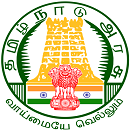Introduction
Trigonometric function ratios and identities are essential tools in trigonometry, a branch of mathematics that deals with the relationships between angles and the sides of triangles. Let's explore these concepts in simpler terms:
- Trigonometric Function Ratios: Trigonometric ratios are ratios of the sides of a right triangle. In a right triangle, we have three primary ratios:
- Sine (sin): It is the ratio of the length of the side opposite to an angle to the length of the hypotenuse.
- Cosine (cos): It is the ratio of the length of the side adjacent to an angle to the length of the hypotenuse.
- Tangent (tan): It is the ratio of the length of the side opposite to an angle to the length of the side adjacent to the angle.
- Pythagorean Identity: The Pythagorean identity is a fundamental equation in trigonometry that relates the sine and cosine functions:
- It states that in a right triangle, the square of the length of the hypotenuse is equal to the sum of the squares of the lengths of the other two sides.
- In trigonometric terms, sin^2θ + cos^2θ = 1, where θ represents an angle in the triangle.
- Reciprocal and Quotient Identities: Reciprocal identities connect trigonometric functions to their reciprocals:
- For example, sine is the reciprocal of cosecant, cosine is the reciprocal of secant, and tangent is the reciprocal of cotangent. Quotient identities express ratios of trigonometric functions in terms of each other:
- For instance, tanθ = sinθ / cosθ.
- Sum and Difference Identities: Sum and difference identities provide relationships between trigonometric functions of the sum or difference of two angles:
- Examples include sin(A + B) = sinAcosB + cosAsinB and cos(A - B) = cosAcosB + sinAsinB.
- Double Angle and Half Angle Identities: Double angle identities relate trigonometric functions of a double angle to those of the original angle:
- Examples include sin(2θ) = 2sinθcosθ and cos(2θ) = cos^2θ - sin^2θ.







.webp)
%20(1).png)






 CUSAT CAT (Cochin University of Science ...)
CUSAT CAT (Cochin University of Science ...) MHT CET (Maharashtra Common Entrance Tes...)
MHT CET (Maharashtra Common Entrance Tes...) KCET (Karnataka Common Entrance Test...)
KCET (Karnataka Common Entrance Test...) JEE Advanced (Joint Entrance Examination...)
JEE Advanced (Joint Entrance Examination...) TNEA (Tamil Nadu Engineering Admissions...)
TNEA (Tamil Nadu Engineering Admissions...) SRMJEEE (SRM Joint Engineering Entrance ...)
SRMJEEE (SRM Joint Engineering Entrance ...) WBJEE (West Bengal Joint Entrance Examin...)
WBJEE (West Bengal Joint Entrance Examin...).webp) GUJCET (Gujarat Common Entrance Test...)
GUJCET (Gujarat Common Entrance Test...) BITSAT (Birla Institute of Technology an...)
BITSAT (Birla Institute of Technology an...) VITEEE (Vellore Institute of Technology ...)
VITEEE (Vellore Institute of Technology ...)



%20(1).png)
